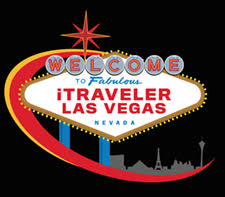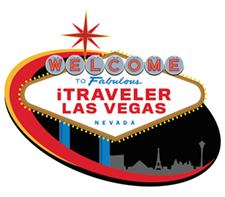Tours of National and State Parks and Monuments
Experience the Natural Beauty of Some of the World's Greatest Parks Within a Few Hours from Las Vegas
Within a five-hour driving radius of Las Vegas lies some of the best and most famous National and State Parks of the United States. These natural and historic wonders can be seen by several modes of transportation including helicopter, airplane, hot air balloon, boat, bus and other ground transportation. The Grand Canyon is probably one of the most famous of the National Parks and is approximately four and a half hours to both the North and South Rim. Listed as one of the Seven Natural Wonders of the World, the Grand Canyon is spectacle of beautiful colorful geologic layers, millions of years old, revealed by the powerful forces of erosion and the Colorado River. This iconic American National Park includes Grand Canyon Village, hiking, biking, camping, rafting, and mule rides. Picturesque views of the 1 mile (1.6 km) deep, 277 mile (446 km) long, 18-mile-wide canyon carved by the Colorado River can be had from the rim, on trails in the canyon, river rafting or at the Grand Canyon West skywalk (outside of National Park). The Grand Canyon West Skywalk is a horseshoe shaped, 10 foot wide cantilever glass walkway span extending 70 feet over the Grand Canyon Floor lying 4,000 feet below. The bridge provides an exhilarating straight-down view of the canyon through the clear glass of the skywalk, all while having a strength capable of supporting the equivalent 70 fully loaded 747 jets. A less famous, but photographer’s favorite for a beautiful color pallet of rock formations, canyons and the meandering majestic Colorado River lies in Northern Arizona on the Navajo Nation at Antelope Canyon and Horseshoe Bend. This photographic paradise lies about 4.5 hours northeast of Las Vegas and does require a guided tour into the Upper and Lower Canyon (Horseshoe Bend does not) since they lie on Navajo Nation land.
Two and a half hours northeast of Las Vegas, Zion National Park is Utah’s first national park. Panoramic views of red and cream shaded cliffs tower above the canyon floor and the Virgin River. Camping, sunset and star gazing, biking, canyoneering, rock climbing, backpacking and hiking for all abilities are attractions for visitors to this magnificent park. Must sees in Zion include the Zion Canyon Scenic Drive, Angel’s Landing, The Narrows, Weeping Rock, the Emerald Pools (Lower and Upper) and Zion-Mount Carmel Highway. It is worth noting from mid-March to late November cars are not permitted on the Zion Canyon Scenic Drive, but a free shuttle bus makes stops along the route at key points of interest. High atop the plateau of the Grand Staircase in Utah, Bryce Canyon National Park is a land of unique geologic wonders including the world’s largest concentration of spires called Hoodoos and endless western skies and vistas. Just 4 hours from Las Vegas, adventurers in Bryce Canyon have many activities to choose from including camping, hiking and horseback riding to lose themselves in the one-of-a-kind beauty of the canyon. Inspiration Point, Rim Trail, Bryce Point, Sunset Point, Rainbow Point, Yovimpa Point, Fairyland Canyon and the Scenic Drive are great areas to experience the almost other worldly geography and landscapes of Bryce Canyon.
Death Valley National Park is a stark contrast from the Las Vegas oasis in the desert 2 hours away. The park is the largest national park south of Alaska and is known for being the hottest place on Earth and the driest location in North America. On July 10, 1913 in Furnace Creek, the world record for the highest air temperature on the Earth’s surface was recorded at 134°F (57°C). Death Valley’s Badwater Basin’s elevation of 282 feet (86 m) below sea level also holds the distinction of being lowest elevation in North America. Telescope Peak sits high above the valley floor at 11,331 feet (3,454 m) with one of the largest vertical rises above surrounding terrain in the contiguous United States. Death Valley can be visited any time of year with the proper preparation and hydration. Winter and Spring temperatures are pleasant and an ideal time for camping, hiking, biking and mountain biking, horseback riding, backcountry driving with 4×4, birdwatching and star gazing in the highest rating of darkness in a Gold Tier Dark Sky Park as designated by The International Dark-Sky Association. Joshua Tree National Park is unique habitat straddling the Colorado and the Mojave Desert containing rugged rock formations, dramatic desert landscapes and vast collections of Joshua trees, for which the park is named. Three hours from Vegas, Joshua Tree is home to Cholla Cactus Garden, Black Rock Canyon, Cottonwood Springs, Covington Flats, Indian Cove, Keys View, Skull Rock, Arch Rock, Heart Rock and Desert Queen Mine. The many activities for enjoying everything Joshua Tree National Park has to offer include hiking, backpacking, climbing, biking, horseback riding, geology tour road, backcountry 4×4’ing, birdwatching, wildflower viewing, photography and star gazing.
Red Rock Canyon National Conservation Area is picturesque landscape with world class rock climbing and hiking where desert meets the mountains, with stunning red and white rock formations as the focal point of the transition. All the same modes of transportation available to see the bright lights of the strip are at your beckon take in the bright vibrant colors of the natural landscape. Ride a trike motorcycle, scooter, scooter car, in a Pink Jeep or tour by helicopter while enjoying the splendor of Redrock in the open desert air. Wander and traverse the desert hills and mountains on the trails through rocks, washes and canyons on hikes for all ability levels. Experience Redrock Canyon scenery and wildlife like a cowboy in the old west on a sunset horseback ride and campfire barbeque experience. With the many options available to be immersed in the majestic landscape and vegetation of Redrock Canyon, explorers will quickly see why the canyon is a local favorite.
Valley of Fire State Park is lesser known than Red Rock, but it’s 40,00 acres of flaming red Aztec sandstone, contrasting gray and tan limestone, ancient, petrified trees and petroglyphs dating back more than 2,000 years, it is no wonder why this hidden outdoor gem is world-renowned. Lake Mead National Recreation Area is a man-made reservoir on the Colorado River created by Hoover Dam. The lake between Nevada and Arizona provides for recreational activities such as hiking, biking, boating, jet skiing, kayaking, swimming, beaches and camping. Tours of Lake Mead and Hoover Dam can be taken by helicopter, ATV, boat, kayak, mountain bike and private tour. A beautiful way to explore the Colorado River, the Black Canyon, and the green waters of Emerald Caves is by kayak. Be on the lookout for and wildlife viewing of Big Horn Sheep and Bald Eagles high above the canyon walls while paddling and peacefully float on the river. For an inside look at the dam which provides electricity and water to Nevada, Arizona and California; take the Powerplant Tour deep inside the concrete walls to see turbines, inspection and original tunnels and ride the original elevator to the top of the structure in the walls of the Black Canyon.
In just an hour drive outside of the desert lies the high country of the Mount Charleston Wilderness located in the Humboldt-Toiyabe Forest in The Spring Mountains National Recreation Area. Bristlecone pines scattered across 18,000 acres, unique geological formations and strata, steep canyons and Charleston peak standing at just below 12,000 feet (11,918 feet) are all unexpected features of a landscape on the edge the bright lights of the strip. The gateway to the area is 90 acres with a visitor center, picnic areas, trailheads and amphitheaters, the Seven Stones Plaza and the Cold War Memorial. Kyle and Lee Canyons offer a variety of activities throughout the changing seasons in the mountainous environment which include hiking, biking, camping, picnicking, climbing, scenic drives, off roading, horseback riding, winter play areas and skiing. Lee Canyon Ski Resort has downhill skiing and tubing in the winter and scenic chair lift rides, hiking, mountain biking, disc golf, archery and axe throwing in the summer.
Tule Springs Fossil Beds National Monument is 22,650 acres of one of the world’s greatest collections of Ice Age Fossils in both terms of numbers and types of species and is remarkably just 20 miles north of the Strip. Herds of Ice Age Columbian mammoths, camelops, American lions, extinct horses, massive ground sloths, dire wolves, saber-toothed cats, ancient bison, and llamas all called this area home and some remaining today as fossils in the now dry desert washes. Floyd Lamb Park at Tule Springs is a 680-acre state park with historic areas, walking/jogging paths, fishing ponds, horse trails, picnic areas, mountain bike trails and BMX track, volleyball court, barbecue grills and hay barn all within an area of lakes, vegetation and views of the surrounding Sheep and Spring Mountain Ranges.
Spring Mountain Ranch State Park is beautiful area of grass and shade trees down the road from Redrock, used historically as a ranch and luxury retreat by owners including German actress Vera Krupp and Howard Hughes. Historic building tours of some of the oldest buildings in Nevada, hiking trails, tree-shaded picnic sites with grills and Super Summer Theatre plays every summer make Spring Mountain Ranch a great day excursion outside of Las Vegas. Located in what is now Downtown Las Vegas, the Old Las Vegas Mormon Fort was established in 1855. The historic remains of an adobe fort built by Mormon missionaries on the site is the first permanent, non-native settlement in the valley. Artifacts from the period are housed in the fort and there is a Visitor Center with exhibits and historic photos.
iTraveler Las Vegas Local Favorites: Red Rock, Grand Canyon, Lee Canyon

